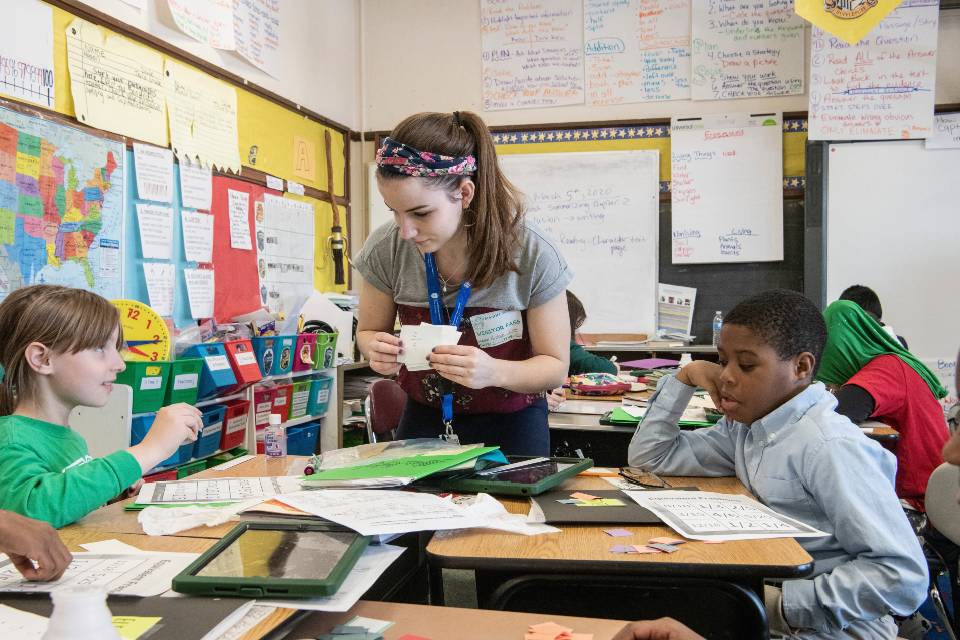Cooperating Teacher Field Experience
Cooperating educators model for, mentor and monitor School of Education students at various field experience levels.
Whether School of Education students are observing, co-teaching, taking over a classroom, or anything in between, cooperating teachers significantly impact the education major's experience and learning. University professors and instructors, with the help of school and district administrators, are always seeking high quality teachers to host the variety of field experiences we offer.
What does the term "high quality teacher" mean?
- As a baseline, a high-quality teacher is an educator who has been teaching for at least three years in a position for which they are certified.
- In addition, teachers who are strong, inclusive instructors with a caring yet firm classroom management approach are positive role models for our students.
- Finally, successful cooperating teachers are collaborative—willing to interact with, give feedback to, and learn with the university students and faculty members involved.
What does a cooperating teacher do for field experiences?
The answer to this question is: almost anything, depending on the type of field experience. Here are some examples:
- Early Observations Host Teacher: Model excellent, everyday teaching and routines; include the student in assisting if and where meaningful; answer the student's questions if time permits; confirm dates/hours of attendance.
- Host Teacher for Methods Course Field Work: Work with the course professor/instructor (in advance) to prepare for the model used (one-to-one/small group/co-teaching/special project/event); help organize participating learners, space, frequency, and other details; observe, monitor and interact with both SLU and class learners; give private feedback as appropriate; confirm dates/hours of attendance.
- Cooperating Teacher for Practicum Student: Expose the practicum student to a wide variety of classroom activities. (The practicum
student may initially observe and then gradually begin to work with students under
the cooperating educator’s direction. The practicum student may work with individuals,
small groups and eventually the entire group with supervision by the end of the practicum);
interact with and give informal and formal feedback; collaborate with the practicum
student and University supervisor throughout the semester.
- NOTE: Practicum placements can span from 35 to 175 hours, depending on the type of practicum.
- Cooperating Teacher for Student Teacher: Just as in a practicum situation, a student teacher will begin by observing and build up to taking over the entire classroom one subject or block at a time over the course of several weeks. Facilitating the success of the student teaching experience can be accomplished by exposing the teacher candidate to a variety of excellent teaching and management activities; interactively monitoring the learners through co-teaching and observation; giving informal and formal feedback; collaborating with the teacher candidate and university supervisor at an initial training and throughout the semester.
- Other: Our professors and instructors are intentional about planning field experiences aligned to course objectives and connecting the real world of teaching with theories learned. Depending on the course, our students may practice conducting read-alouds, assess learners' reading fluency and comprehension, chart engagement and intervention strategies, conduct action research, and so on. Cooperating teachers are asked to support the learning and share practical tips and feedback.
Resources for Collaboration:
Just for You:
See the Social and Emotional Learning Blog with sample video lessons from our students.
The School of Education Field Office is grateful for the willingness of cooperating teachers as they share their expertise and joy of teaching in support of our students.
